Aname species a Black Wishbone Spider, also known as the False Funnel-web
These spiders belong to the suborder Mygalomorphae, which are medium to large primitive spiders, with downward pointing fangs requiring them to strike down on their prey. The female of the Black Wishbone Spider is quite large and to some can look very frightening, but fortunately she seldom leaves her burrow unless attacked by predators like scorpions and centipedes.
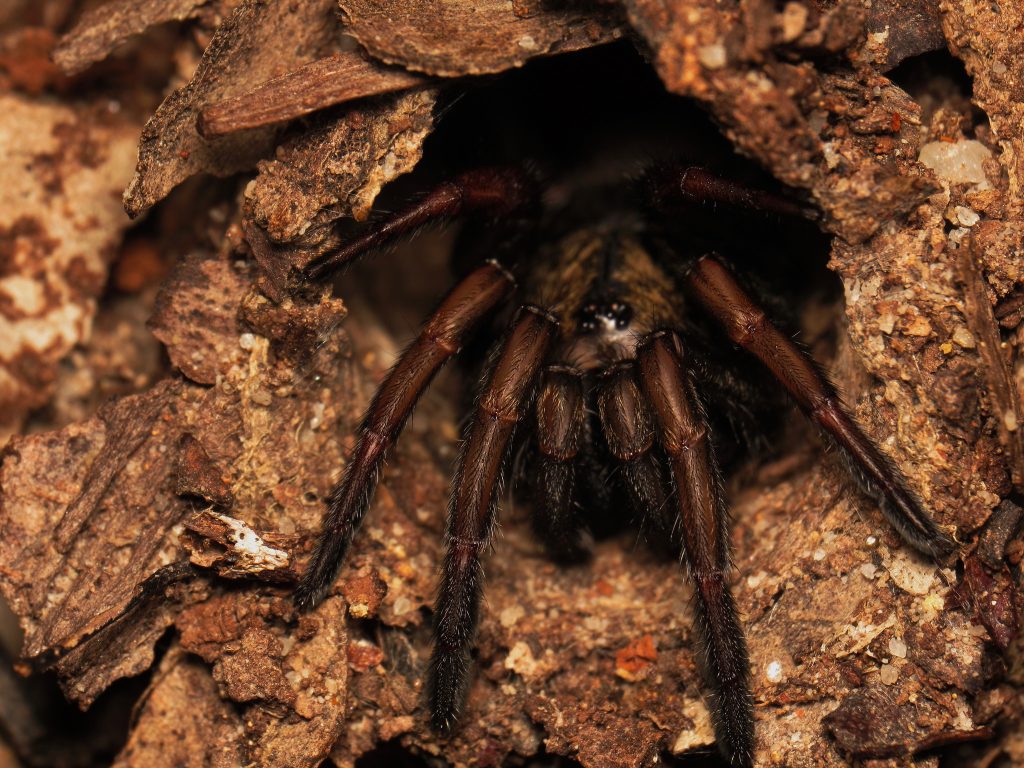
Wishbone Spiders – Anamidae
Spiders in the group are burrowing species the create tunnels under the ground often with a ‘y’ shaped construction. The spiders use one shaft to hunt from and the secondary shaft as an escape route. They are nocturnal and may be seen at the entrance to their burrows at night. They have large fangs and can ambush and overpower a wide variety of invertebrate prey from their burrows. Some species in this family are particularly common throughout Australia’s dry inland regions.
Aname is a genus of mygalomorph spiders. It is endemic to Australia. The spiders, as well as some in closely related genera, are also known as wishbone spiders.
Aname species may be distinguished from other genera in the family by the presence of a prominent asetose ventral depression on the male pedipalpal tibia.
While Aname prefers dry open country and occurs throughout much of Australia (though mostly inland), Chenistonia occurs mostly in South and Western Australia, and Namea is only known along the east coast in rainforests.
The lesser wishbone spider (Aname distincta) occurs through the lowland open forests of south-east Queensland’s Moreton Valley as far north as Eidsvold and Gayndah, and the greater wishbone spider (Aname pallida) from Gladstone along dry coastal corridors to Cairns. One species (Aname tasmanica) is found only in Tasmania.
They are easily mistaken for the funnel-web spider, mouse and even trapdoor spider. They are much more widespread than funnel-web spiders but not nearly as venomous. Would you be able to recognise a wishbone spider? (Image Credit: Cael David-Gallery, Aname comosa)
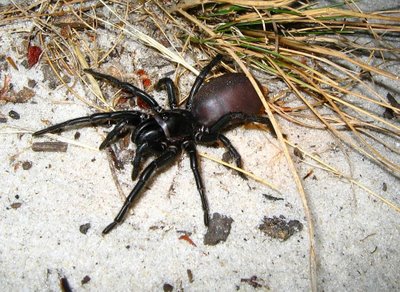
A wishbone spider (Nemesiidae) lies in ambush along an embankment, ready to pounce on any bark crickets or moths that pass by. These mygalomorphs are basically trapdoor spiders without a door, though the entrance may be covered with a thin layer of silk. Dozens of small nemesiids (possibly in the genus Stanwellia) could be easily spotted on the soily embankments in Ku-ring-gai, each measuring about 0.5-1.5 cm in length. Wishbone spiders get their common name from the y-shaped burrows they construct. Females are thought to remain in a single burrow for their entire life while males disperse to find a suitable mate, dying after fulfilling their reproductive role. Much of their ecology remains to be described.
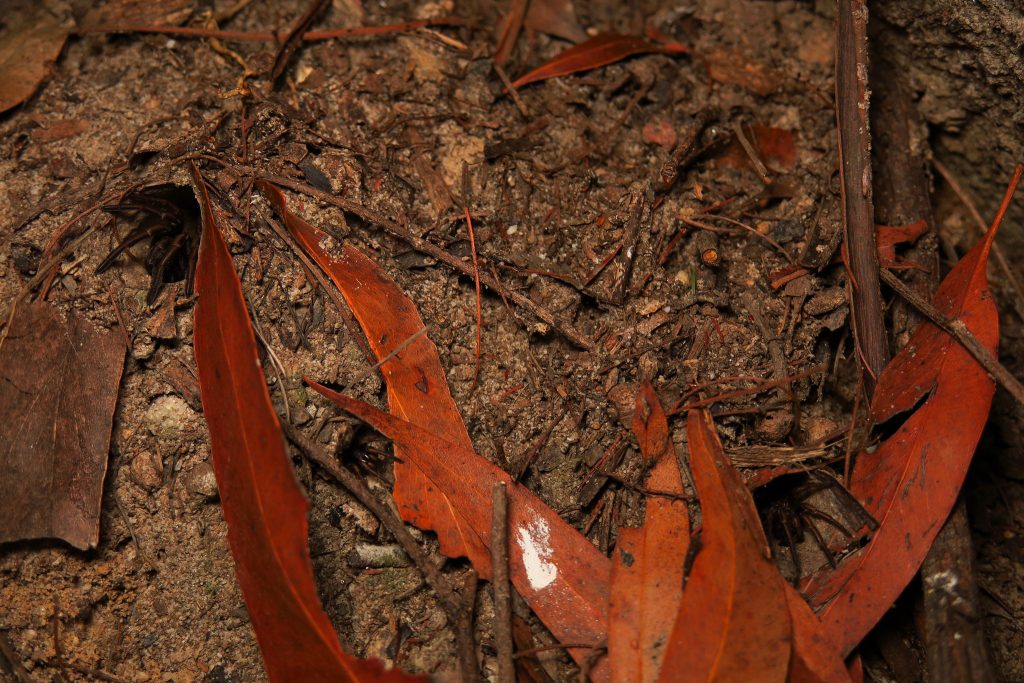
Note: could be a trapdoor spider in the family Idiopidae (e.g. Misgolas sp.). I didn’t entice the spider out of its burrow to see the entire body, nor am I good at IDing small mygalomorphs!
Common name: Wishbone spider
Scientific name(s): Family Anamidae (part of the Family Nemesiidae until very recently).
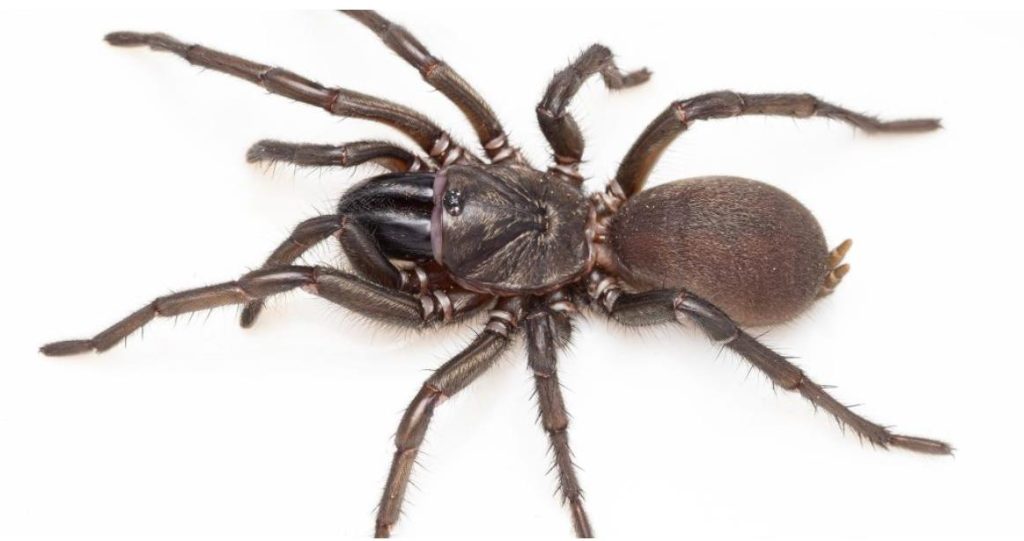
Description: Wishbone spiders are easily confused for other mygalomorphs, including the funnel webs, mouse spiders, and various trapdoor spiders. Many wishbone spider species are black, but some may be grey, brown, reddish brown or golden-brown, or golden or silvery thanks to a fuzz of fine hairs. The large jaws are elongated and usually darker and smoother than the body, and the eight eyes are placed in four tightly-spaced pairs at the middle front of the cephalothorax. Wishbone spider legs are generally long and slender, and the two spinnerets usually upward-pointing. Females are generally larger – up to 6cm in body length in some species – and stockier than the males. Males have a spur on the first pair of legs, used to hold the female’s jaws during mating.
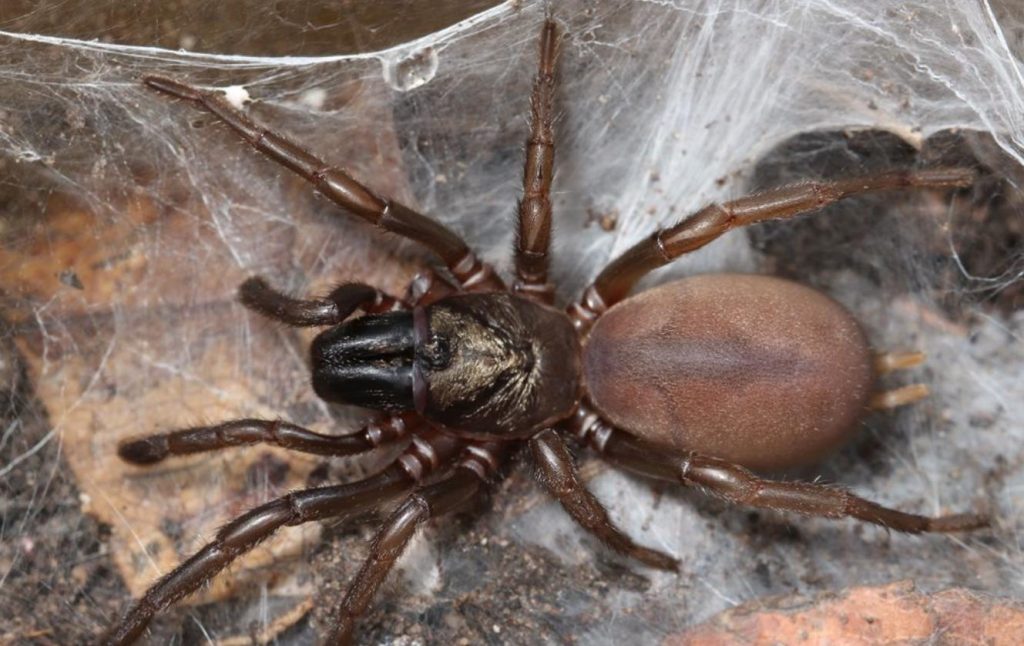
Geographic distribution: Wishbone spiders are found over most of Australia. One common genus in dry open country is Aname, although other genera in the family are restricted to particular habitats such as rain forests. Western Australia probably has many un-described species.
Habitat: Wishbone spiders live in Y-shaped, silk-lined burrows, from which they derive their common name. The burrows may be up to 40 cm deep, and one arm is used as an escape tunnel if the spider is attacked, or as a refuge during flooding. They spend most of their life waiting near the lidless entrance of the longer arm for passing prey. The entrance may have silk across it, especially in dry hot weather.
Females will not leave the burrow unless disturbed, flooded out, or accidentally unearthed, but in the breeding season – usually spring and summer, after rain – males will leave their home to find a mate. Males are the most frequently encountered wishbone spiders.
Pest status: Wishbone spiders of either sex will rear up on their hind legs and may lunge if threatened. The long fangs may cause a deep and painful wound, but are not considered a serious medical threat. However, since they can easily be mistaken for funnel-web spiders in the eastern states, caution should be taken and medical advice sought in the case of any actual bite.
Treatment: No treatment is required – males will not linger around houses, and the females will not leave their burrows unless forced. If encountered in a garden, both can be gently encouraged to move on with a broom.
